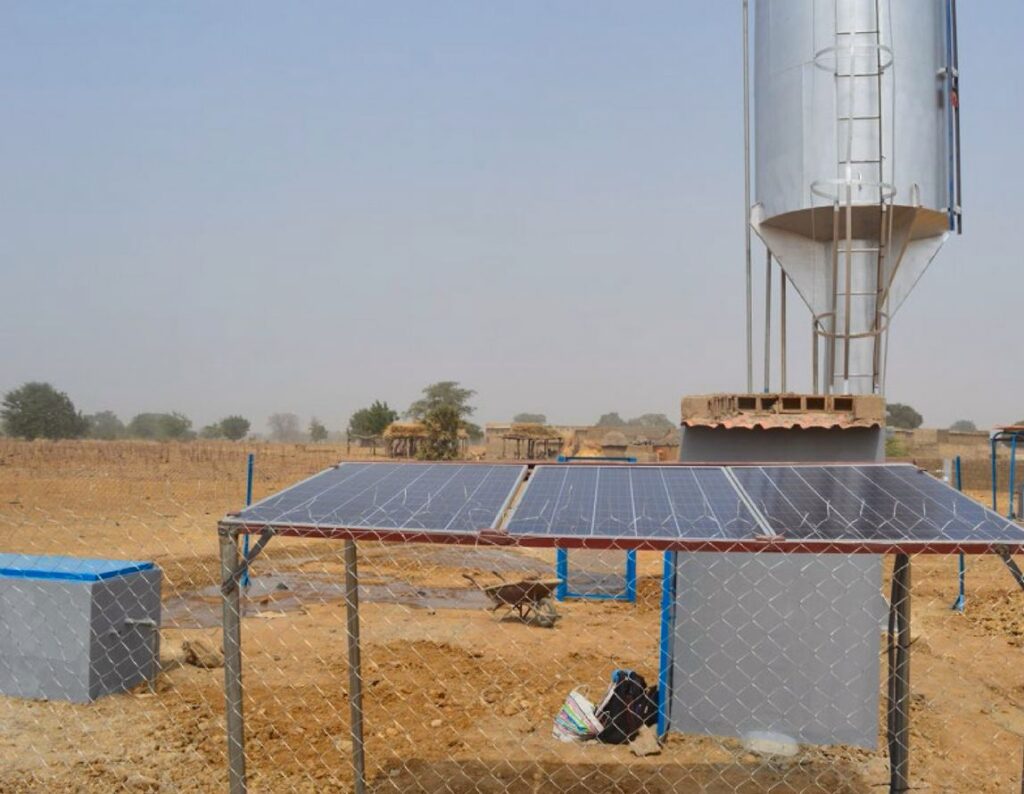An international research group has proposed a low-cost testing methodology for solar-powered water pumping systems that could reportedly improve water access in developing countries. The new approach enables continuous monitoring of boreholes without additional fuel costs or interruptions to water supply.
An international research team has proposed a new testing method for photovoltaic water pumping systems (PVWPS) used for domestic water applications and irrigation in developing regions.
“No previous studies have proposed such a method for evaluating borehole evolution over the lifetime of PVWPS,” says the lead author of the study. Simon Meuniertold pv magazine. “In particular, it uses the system’s photovoltaic panels as a power source to conduct regular pumping tests in boreholes, rather than relying on diesel generators, and can be applied in a variety of contexts, benefiting communities, governments, NGOs and other stakeholders who engaging in sustainable water and energy benefits. solutions.”
In the newspaper “Photovoltaic pump testing: a new supervision method for photovoltaic water pump systems”, published in HeliyonMeunier and his colleagues explained that the new testing approach offers innovative and practical benefits such as continuous and cost-effective monitoring, reduction of emissions and logistical complexity, as well as improved system longevity and groundwater sustainability.
“Conventional borehole testing at PVWPS typically requires diesel generators and significant manpower, making it expensive and often only feasible before installation of the PVWPS,” said Meunier. In contrast, our method enables continuous borehole monitoring without additional fuel costs or water supply interruptions.
They also highlighted that many countries in Africa currently require pumping tests before installing a pumping system on the borehole or when recommissioning the borehole, noting that these tests are typically carried out within a few days. Additionally, some countries also require post-deployment testing to protect the borehole over time.
“Most attention is paid to water pollution, with regulations on minimum distances between the borehole head and other facilities, on the borehole cover, on the slope around the borehole head to prevent surface water from entering the borehole, and on the presence of waste in the vicinity of the borehole,” the study notes.
The proposed methodology monitors borehole water levels at different flow rates without disrupting the operation of the PVWPS, its creators said. The test setup uses a “non-intrusive” clip-on flow sensor that can be uninstalled after the test is completed. It measures the hydrostatic pressure caused by the height of the water above.
“The installation of the equipment is carried out approximately 1 hour before sunrise in order to be ready to start the measurements when the water in the borehole is still at the static depth,” the scientists said, noting that the test can be easily performed by one technician could be performed. only. “The data collection starts 30 minutes before sunrise. The measurement is stopped about 2 to 3 hours after sunset, to collect data all day and observe the recovery of the water level without pumping.”
According to Meunier, these tests enable early detection of problems such as clogging of boreholes. “Regular monitoring through photovoltaic pumping tests supports sustainable groundwater management, prevents over-extraction and extends the operational life of both the borehole and the PVWPS,” he added.
The proposed methodology was tested in a 600 W PVWPS installed in 2018 GogmaBurkina Faso, where there is no centralized water supply network. The system supplies approximately 7 m3 of water per day for approximately 280 residents. “The borehole is 56 meters deep, has an internal diameter of 0.11 meters and the motor pump is located at a depth of 30 meters,” the scientists specified. “The height between ground level and the level at which the water enters the tank amounts to 7.6 meters.”
They found that the proposed test method accurately determines the borehole parameters, achieving a model fit with an average coefficient of determination (R2) of 0.99. They also estimated the cost of a photovoltaic pump test at $43, which compares to $511 for the multi-step draw test and $2,050 for long-term tests.
“In addition, the cumulative cost of conducting photovoltaic pump tests every two years over a ten-year period (the estimated life of the motor pump) is less than 10% of the cost of prematurely replacing the motor pump,” she added. “Over a period of 50 years (the estimated life of a borehole), the total cost of semi-annual photovoltaic pump testing is only 13% of the cost of drilling a new borehole.”
“By using solar energy instead of diesel, this method reduces emissions and logistical complexity, in line with sustainability goals,” Munier concludes.
The research team included academics from France’s Université Paris-Saclay, Sorbonne Université in France and the Institut Photovoltaique d’Ile de France, as well as Stanford University in the United States and Imperial College London in the United Kingdom.
This content is copyrighted and may not be reused. If you would like to collaborate with us and reuse some of our content, please contact: editors@pv-magazine.com.

